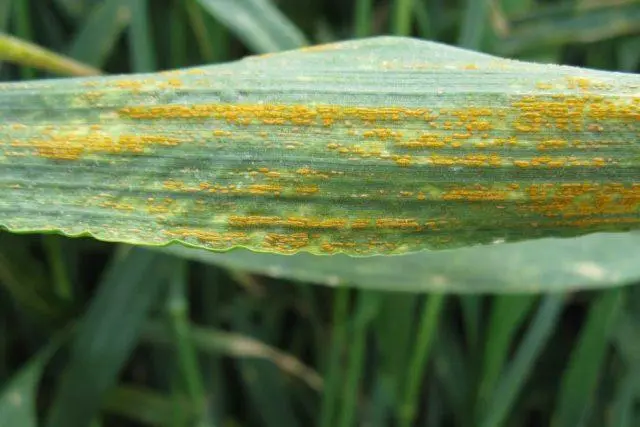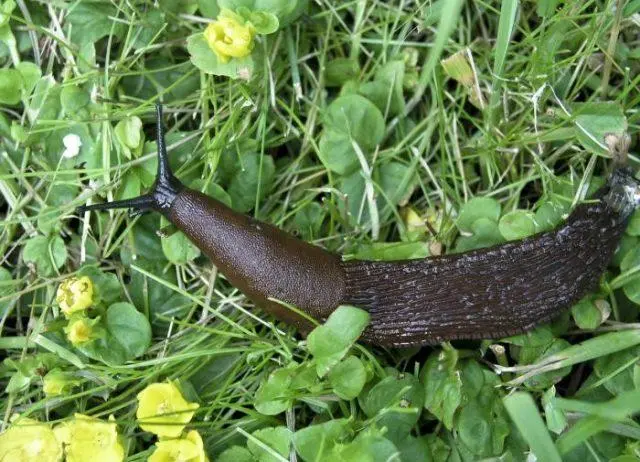Contents
Sidalcea perennial is a beautiful plant for a summer cottage. To successfully grow a flower, you need to study its features and care requirements.
Description of the seat with a photo
Sidalcea is a herbaceous plant of the Malvaceae family. It has bare or pubescent stems of an upright type, reaches 1 m in height. The leaves of the culture are rounded or heart-shaped, the lower ones are located on long petioles. The edges of the plates are often serrated.
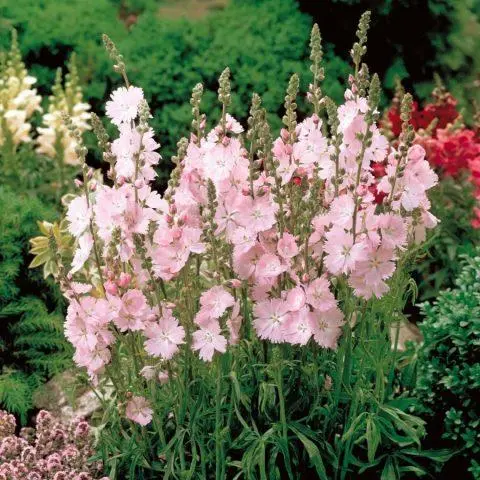
Sidalcea spreads up to 40 cm in diameter
In June, the perennial blooms with lush buds of pink, lilac, white or pale purple. On the fringed petals, thin veins are usually noticeable. The buds are collected in cluster or spike-shaped inflorescences in the axils of the leaves. The decorative period of the perennial lasts about two months, sometimes the sidalcea retains its attractiveness until September. Early varieties with proper care often bloom again in the fall. Sidalcea fruits are collected from 5-10 decaying sections, containing only one seed.
In nature, the perennial is found in Mexico and the western United States. Settles both in dry open places and in wetlands, depending on the species. In culture, the perennial is grown all over the world in warm and temperate climatic zones.
Sidalcea varieties
The sidalcea plant is represented by a large number of ornamental varieties. Several varieties deserve special attention.
Little Princess (Little Princess)
Srednerosly perennial rises up to 45 cm above the ground. From July to August, it blooms with large buds of pale pink color. Differs in compactness, prefers solar places on a site. It can tolerate cold snaps down to -28 ° C.
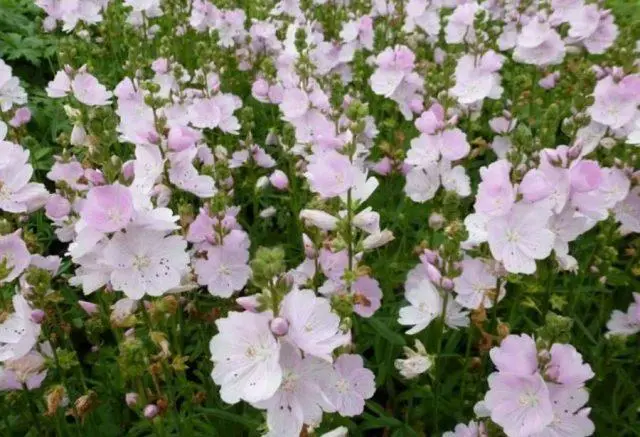
The buds of the Little Princess variety reach 8 cm in diameter.
Party Girl (Party Girl)
Tall sidalcea blooms in mid-summer with lavender-pink buds with a white core. The variety is often used to create borders on the site. With good care, the perennial can bloom until the end of August.
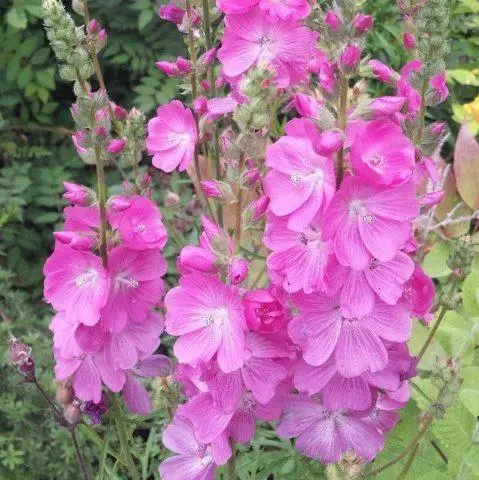
Sidalcea Pati Girl rises up to 80 cm above the ground
Candida
Beautiful white sidalcea brings buds up to 2,5 cm in diameter. It has wide rich green leaves, forms bushes up to 50 cm in diameter. Flowering occurs from mid to late summer.
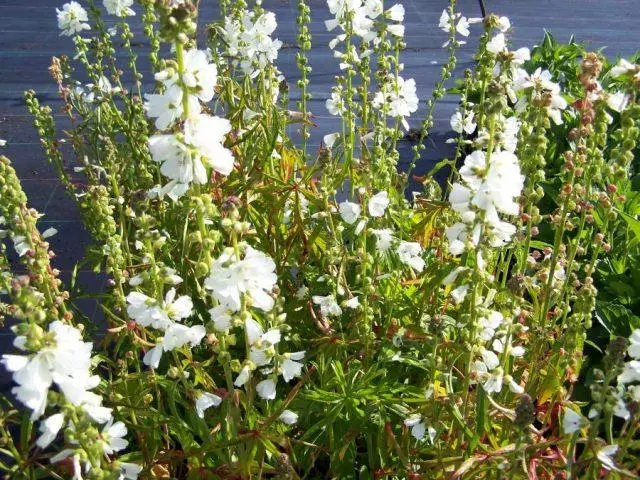
Sidalcea Candida reaches a height of about 70 cm
Diamond (Brilliant)
Vivid hybrid sidalcea produces small carmine-pink buds in a bowl shape. Perennial slightly reminiscent of a rose, rises up to 90 cm above the ground. The stems of the variety are straight with slight branching.
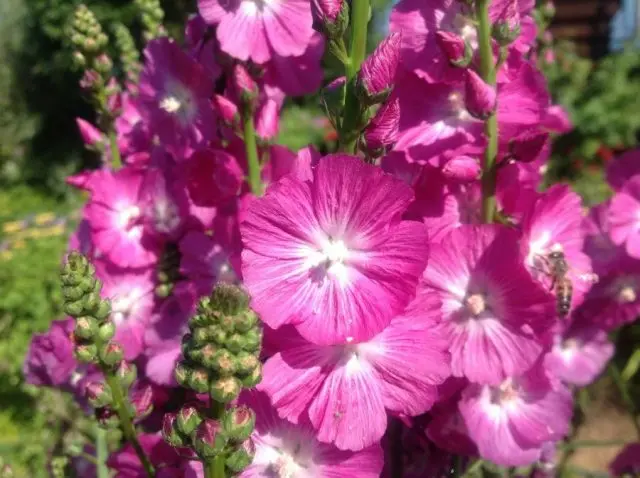
Sidalcea Brilliant prefers planting in the sun in well-drained soil.
Kroffvey Red (Croffway Red)
High sidalcea up to 95 cm above the ground begins to bloom in June and fades closer to autumn. The buds bring dark red, very saturated in hue. The perennial looks spectacular in the sun, in partial shade it loses its color brightness a little.

Sidalcea Croffway Red has a high frost resistance down to -25 ° C
William Smith
Another tall perennial rises up to 90 cm above the ground. It blooms with pink buds with a slight salmon hue, develops well in the sun on loose soil. Perennial tolerates winter cold well, but requires warming of the root area.
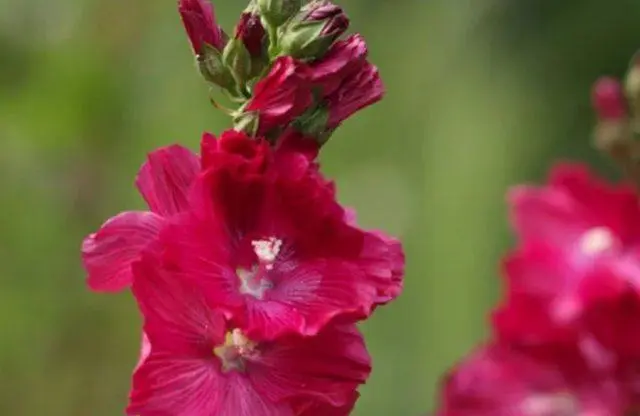
Flowers varieties William Smith in diameter reach 3 cm
Rose Queen
One of the tallest plant varieties reaches 1,3 m above the ground. In June or July, the perennial produces abundant pink buds. It is well suited for planting as a hedge, as it forms compact but fairly dense bushes. The perennial develops in bright sun and partial shade, loves moderate moisture, but does not tolerate waterlogging.

Tall sidalcea Rose Queen prefers landing on a site with cover from strong winds
Planting sidalcea in the open field
Growing sidalcea is not associated with particular difficulties. Perennials are planted in open ground from mid-May to early June. You need to wait until the night frosts end, and the soil thaws properly.
It is recommended to plant perennials on the site in a well-lit place. The soil should be light and drained, sufficiently fertile, neutral in composition. Before planting a perennial, the site is dug up and cleared of weeds, and then river sand is added to the ground. You can also fertilize the soil with compost or humus.
The direct landing of the sitalcea on the site is carried out according to the following scheme:
- They dig a hole for a perennial that is twice as large as the volume of the roots.
- Pour a drainage layer of gravel or sand to the bottom.
- Up to half fill the perennial pit with a nutrient substrate from garden soil and compost.
- Plant the plant in the center and sprinkle the remaining voids with soil.
- They tamp the earth with their hands and water it abundantly.
Sidalcea tolerates slightly acidic soil well, but does not like calcareous soils. It is not necessary to have a perennial in a lowland, as well as in a wetland.
If you have to plant several plants at once, you need to leave 50 cm of free space between them. 1 m2 4-5 perennials are allowed. You can not plant too tightly, the bushes will interfere with the development of each other.
Caring for a babysitter
The caretaker on the site does not need complex care. When growing a perennial, pay attention only to the main points.
Watering
Sidalcea requires abundant and frequent watering immediately after planting. When the perennial takes root, the moisture intensity will need to be slightly reduced. On average, the seedling is watered up to twice a week as the topsoil dries. If the weather is hot and dry, the perennial is moistened more often. Watering is carried out only in the evening or in the morning until noon, until the site is illuminated by the bright sun.

For long-term moisture retention, the soil in the area with sitalcea can be immediately mulched
After each wetting, the soil at the roots of the sidalcea is recommended to be properly loosened to a shallow depth. This will improve the aeration of the soil and help prevent the development of fungi in the perennial. Simultaneously with loosening, weeding of the site from weeds is carried out.
Additional fertilizing
Sidalcea develops well on fertile soil without additional dressings. It is only recommended to add compost to the soil before planting the plant. It is also useful to mulch the perennial with peat – the material will slow down the evaporation of moisture and will supply the flower with valuable substances.
Trimming
Sidalcea does not need decorative pruning, but when flowering, it is recommended to remove fading buds. This will prevent the formation of seeds and extend the decorative period.
With the onset of autumn, the perennial should be cut almost flush with the ground. If only the rhizome remains in the ground, the sidalcea will safely endure even a frosty winter, and in the spring it will release new stems.
Wintering
Sidalcea has an average winter hardiness in the range of -15 ° C. In most regions of Our Country, a perennial in the fall, after pruning, is covered with a thick layer of dry leaves or sawdust. If severe frosts are expected in winter, it is necessary to additionally insulate the plant with spruce branches.
Shelter over the seat is built after the onset of the first cold weather. With the arrival of the spring thaw, it is important to immediately remove the insulation material so that the perennial does not begin to rot.
Breeding methods
It is possible to propagate the seedlings on the site through seedlings or vegetatively. For beautiful hybrid varieties, the second method is used; ordinary perennial varieties are grown from seeds.
Division of the bush
From time to time, it is recommended to subject the adult sidecar to division. This allows not only to propagate, but also to rejuvenate the culture. The procedure is carried out for plants older than 3-5 years.
Division is carried out in early spring or autumn. The schema looks like this:
- Sidalcea is dug up with a shovel or pitchfork and removed from the ground.
- Cut the root ball of a perennial into several parts.
- Treat delenki from decay with a solution of potassium permanganate.
- Transfer to prepared wells.
Throughout the season, perennials are provided with standard care. In loose and moist soil, the bushes take root quite quickly.
Reproduction by seeds
You can grow a new hybrid variety of sidalcea on the site or propagate a simple variety of perennial with the help of seeds. Planting material is stratified for 2-3 weeks in the refrigerator, and then sown in home containers. The procedure is carried out like this:
- Planting material is pre-soaked in warm water with the addition of a growth stimulator.
- Fill the prepared container with nutritious and loose soil.
- The perennial seeds are laid out on the surface of the soil, lightly pressed down with a finger and sprinkled with a substrate.
- Humidify properly with a spray bottle.
For the first time, the seed container is covered with a film to create a greenhouse effect. After the formation of sprouts, the polyethylene is removed and the box is placed on a lighted windowsill. The perennial sidalca is transferred to the open ground at the end of May after the establishment of warm weather.
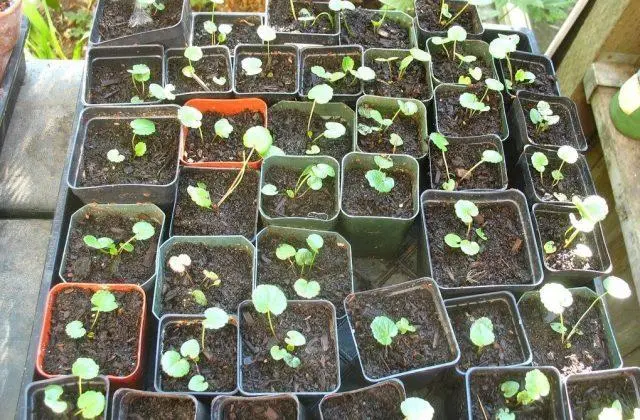
It is necessary to plant perennial seedlings for seedlings in early or mid-March
Diseases and pests
Sidalcea rarely suffers from diseases and parasites. But in adverse conditions, perennials can affect:
- rust – orange spots and growths appear on the leaves of the plant, the plates gradually darken and dry out;

Sidalcea especially often suffers from rust in close proximity to mallow
- root rot – the disease is dangerous for young bushes, the sidalcea begins to darken at the base of the stem and eventually dies;

Root rot in perennial sidalcea provokes waterlogging
- slugs – gastropods eat perennial greens in spring in rainy cool weather.

Slugs are especially dangerous for the perennial sidalcea on marshy ground.
At the first sign of fungal diseases, sidal should be sprayed with Bordeaux liquid, blue vitriol or Fitosporin. All affected parts of the plant must be removed. Homemade soap solution helps well against pests, you can also use an infusion of garlic. When slugs appear, the perennial is dusted with wood ash or treated with Thunder.
Application in landscape design
An ornamental plant is in great demand among gardeners. Srednerosly and high varieties of perennials are used to form hedges and borders, for planting in flower beds and rock gardens. Sidalcea goes well with light-loving plants, it can be placed in the background of an artistic composition or on the sides.
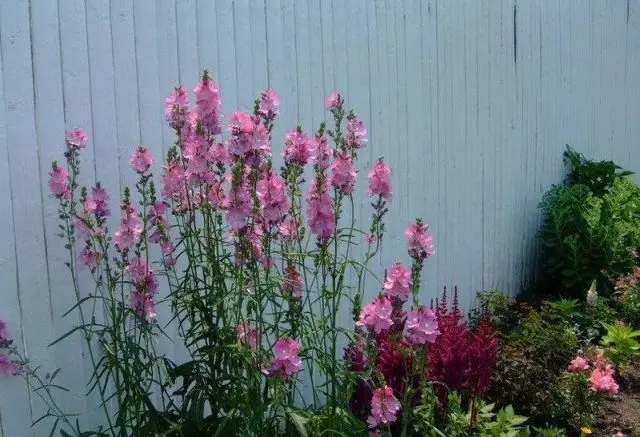
With the help of the perennial sidalcea, you can decorate the empty space near the fence
It is not recommended to plant a perennial in the immediate vicinity of tall shrubs and trees. In their shade, the flower will develop worse. In addition, plants will have to compete for moisture and nutrients.
Conclusion
Sidalcea perennial is a fairly unpretentious, hardy plant with long summer flowering. It does not require complex care, it only needs regular watering.










